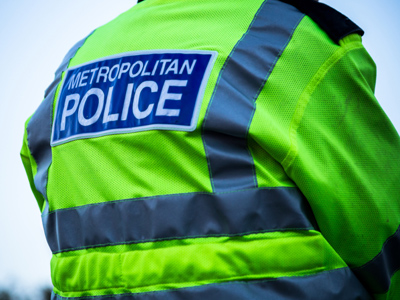
The Metropolitan Police was founded in 1829.
Crime And Punishment: Industrial Britain (18th And 19th Centuries)
Crime and punishment, and how they have changed over the centuries, is one of the subjects looked at in GCSE History. One period studied is the 18th and 19th Centuries, specifically in Britain.
Crime remained a serious problem in Britain throughout the industrial age, but the forms of punishment were savage well into the nineteenth century. A rudimentary police force was, however, in being in most parts of Britain by the middle of the nineteenth century.
Test your knowledge of crime and punishment in the industrial age by playing this quiz.
1.
Without any kind of police force, some eighteenth century magistrates set up their own teams of constables. What was John Fielding's force called?
Bow Street Runners
Fielding's Runners
Rochester Row Runners
Bow Street Boys
These were informal groups, usually employed by a particular court
2.
The Gordon Riots, of 1780, in London lasted for five days. What was the issue involved?
Anti-French opinion
Anti-Roman Catholic feeling
Hunger
Unemployment
Feelings could run high in London, where the authorities could do little against a determined riot
3.
A form of mutilation punishment was finally abolished in 1829. The thumb or the cheek were normally chosen to be burnt. What was this practice called?
Branding
Marking
Engraving
Scorching
Most forms of torture were falling into disuse during the nineteenth century
4.
There were still areas of towns and cities where the forces of law and order were reluctant to go during this period. What were such zones called?
No go areas
Off limits zones
Rookeries
Forbidden areas
Even with a proper police force of the kind that emerged later in the nineteenth century, such areas remained
5.
In the early nineteenth century there were sites in London where public executions could be observed. One was Newgate, where was the other, situated near to Marble Arch?
Moorfields
Coram Fields
Tyburn
Pentonville
Executions were public spectacles, where large crowds gathered to enjoy every aspect - including speeches by the victims
6.
In 1829 the Home Secretary, Sir Robert Peel, set up the Metropolitan Police. They were dubbed "Peelers". What other name was used?
Bobbies
The Old Bill
Rozzers
The Boys in Blue
They were active only in London, but by 1842 each county had some sort of a police force
7.
Instead of being transported some prisoners were held in disused ships moored in the Thames Estuary. What was this accommodation called?
Prison Ships
The Hulks
The Wrecks
The Medway Boats
This was a cheap way of holding convicts, as transportation was expensive
8.
Corporal punishment in the army was abolished in 1881. What was it called?
Flogging
Whipping
Birching
Scourging
This was one among a number of army reforms introduced in stages after the Crimean War
9.
Another form of punishment was abolished in 1837. This involved humiliating the victim, whose arms were stuck in a static wooden structure while the crowd hurled abuse and other things. What was this called?
The stocks
The pillory
The judicial mask
The crucifix
The reason for abolition was the authorities' concern that serious disorder might develop at such sites
10.
A professional detective organisation was set up within the police from 1877. What was it called?
Scotland Yard
The CID
The Special Patrol Group
The Special Constabulary
Henceforward police careers would proceed within the detective force or the mainstream police force
You can find more about this topic by visiting BBC Bitesize - Changes in crime and punishment, c.1500 to the present day
**Unlimited Quizzes Await You! 🚀**
Hey there, quiz champ! 🌟 You've already tackled today's free questions.
Ready for more?
Ready for more?
🔓 Unlock UNLIMITED Quizzes and challenge yourself every day. But that's
not all...
not all...
🔥 As a Subscriber you can join our thrilling "Daily Streak" against other
quizzers. Try to win a coveted spot on our Hall of Fame Page.
quizzers. Try to win a coveted spot on our Hall of Fame Page.
Don't miss out! Join us now and keep the fun rolling. 🎉
**Unlimited Quizzes Await You! 🚀**
Hey there, quiz champ! 🌟 You've already tackled today's free questions. Ready for more?
🔓 Unlock UNLIMITED Quizzes and challenge yourself every day. But that's not all...
🔥 As a Subscriber you can join our thrilling "Daily Streak" against other quizzers. Try to win a coveted spot on our Hall of Fame Page.
Don't miss out! Join us now and keep the fun rolling. 🎉







